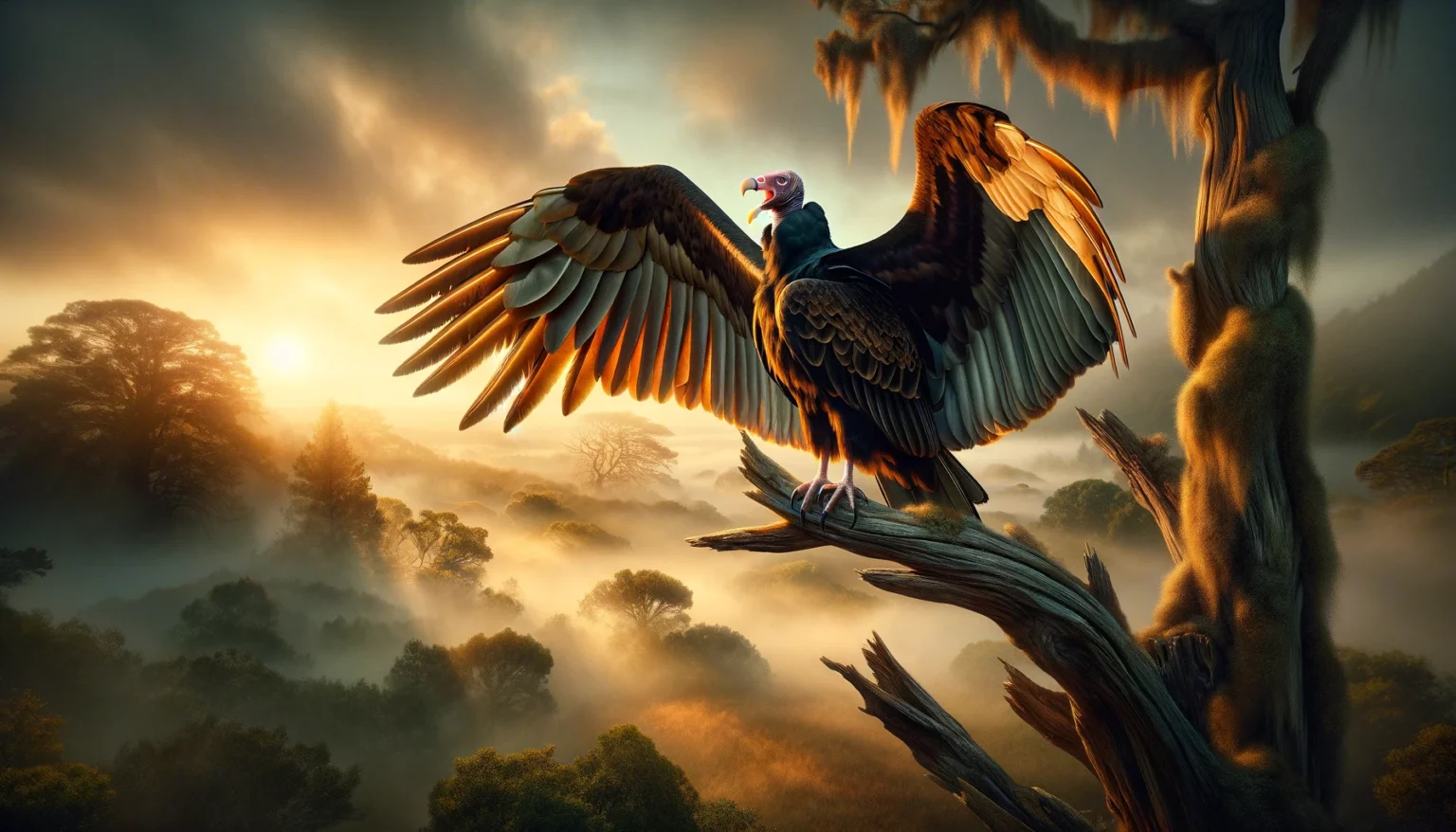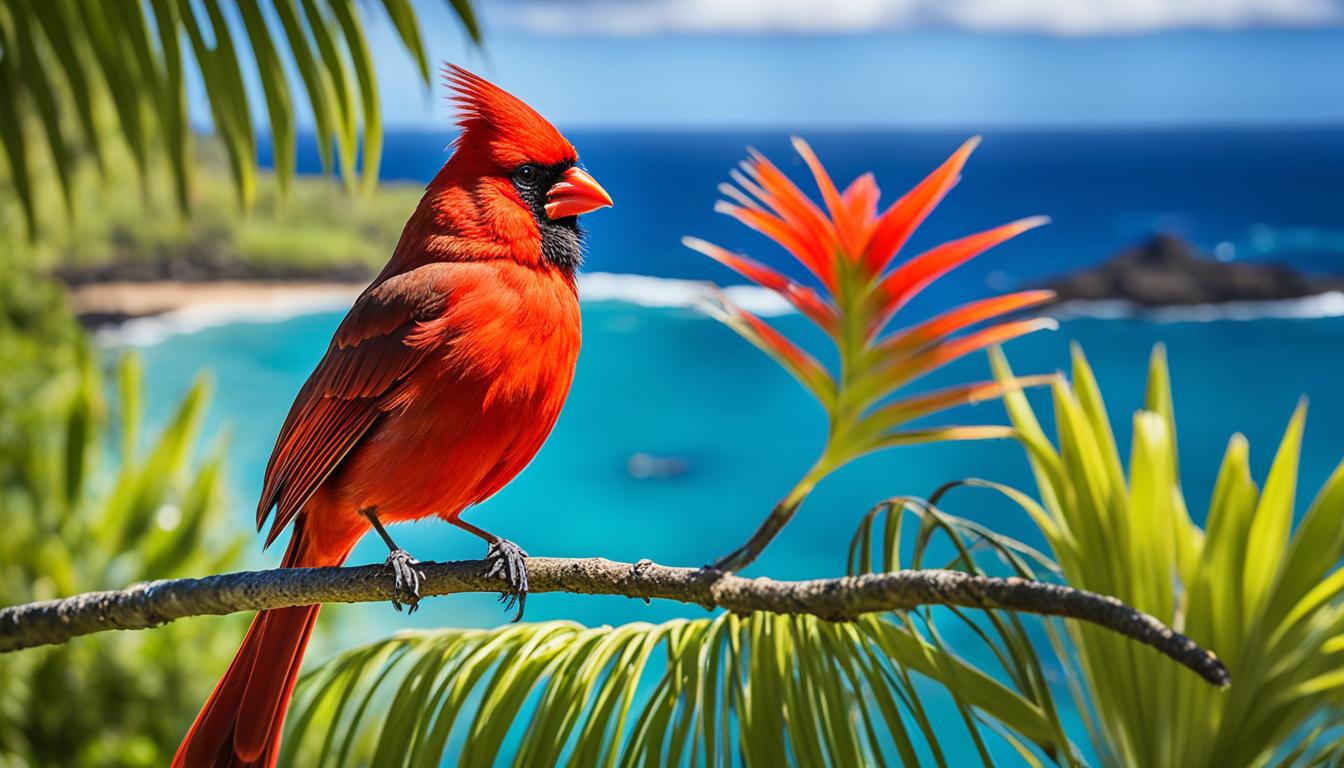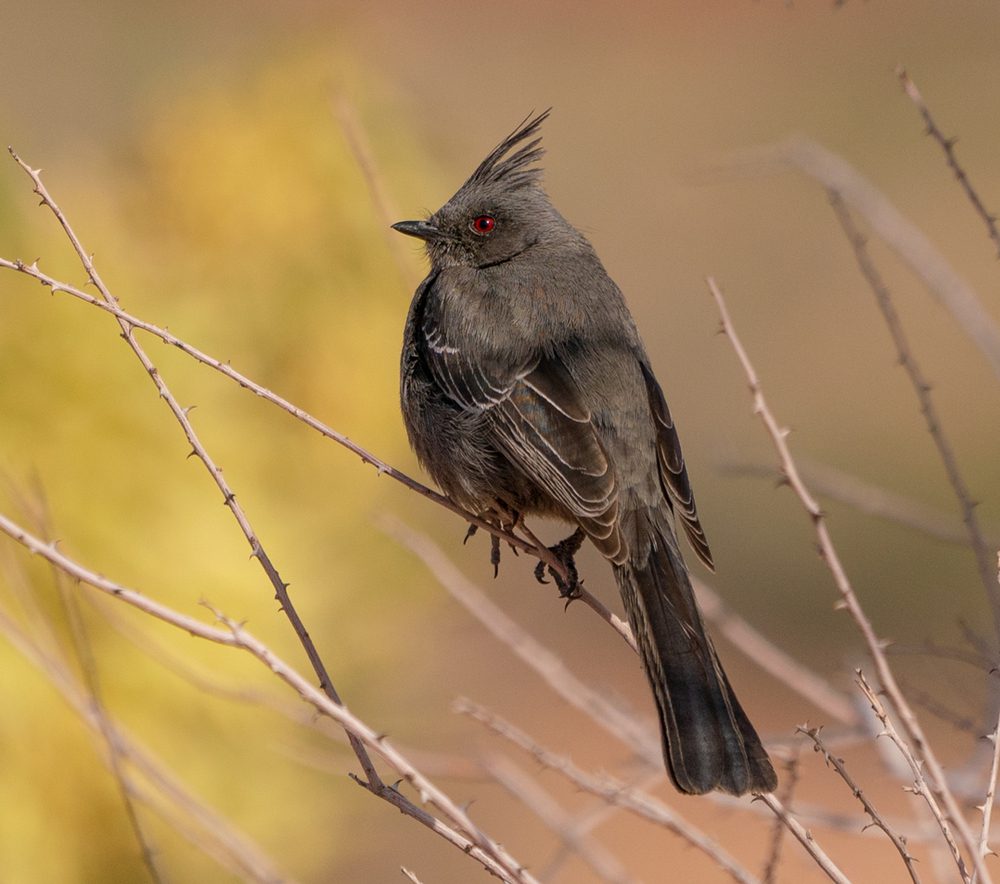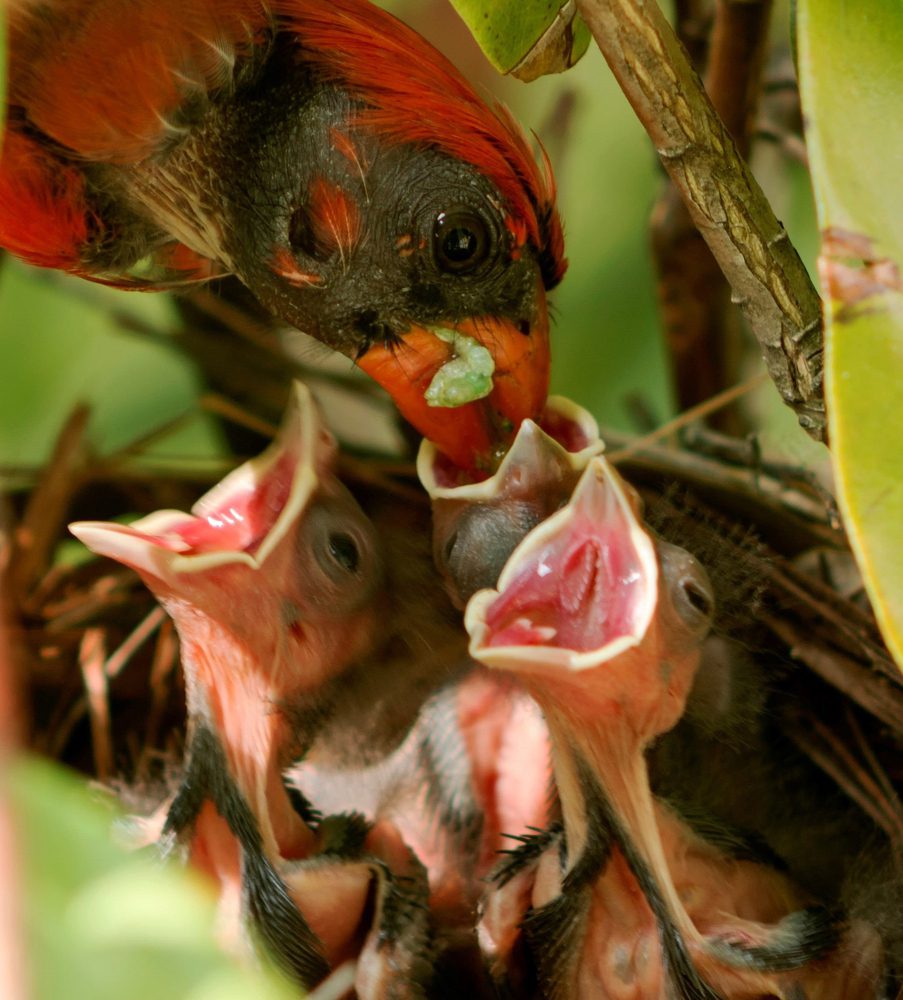Did you know that the Turkey Vulture call can be heard from up to a mile away? Turkey Vultures are often judged unfairly, but if we listen closely, we can learn a lot from them. Their sounds or calls are a big part of what they do, and getting to know these sounds helps us understand these amazing birds better.
Key Takeaways:
- The Turkey Vulture‘s call can be heard from up to a mile away.
- Understanding the Turkey Vulture’s call unveils the mysteries behind these magnificent creatures.
- Turkey Vultures play a vital role in nature’s clean-up crew.
- Don’t overlook the importance of Turkey Vultures in maintaining ecological balance.
- Appreciating Turkey Vultures’ vocalizations brings us closer to understanding their behaviors and habits.
Table of Contents
Turkey Vulture Call
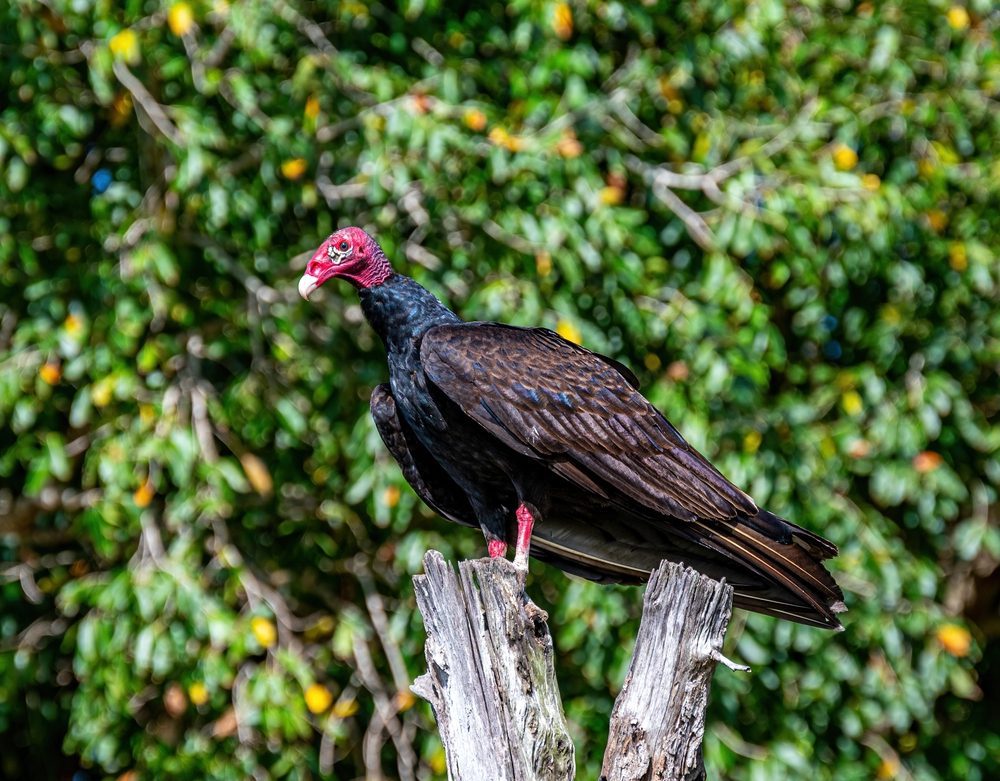
Contributor : Kent Livezey.
When I got close to a bridge, several Turkey Vultures that were sitting on the railing flew away. They made some light grunting sounds (at the start and a bit later) as they started flying; you could hear the flap of their wings in the last 2 seconds. The really quiet grunting noises were made by Neotropic Cormorants.
Contributor : Andrew Spencer.
Two older baby birds were making warning noises because we were near their nest in an old barn. They were on the ground and moved back to where their nest was without showing any signs of wanting to scare us away. Around 1:32, you can hear a noise because one of the birds jumped on something on the stall floor. It was really dark in the barn, so it was hard to see the birds clearly. But with a flashlight, we could tell they had feathers on their back but were still fluffy underneath, and they were almost as big as grown-up birds.
The Unique Lifestyle of Turkey Vultures
Turkey Vultures are really cool birds with some unique qualities. Unlike most birds, they have a great sense of smell that helps them find their food, which is mostly dead animals. This makes them important for cleaning up the environment. They are also amazing at surviving in different places, thanks to their special flying style and ability to adapt.
Learning about these cool features helps us see how Turkey Vultures play a key role in nature and why they’re special in the world of birds.
The Habitats of Turkey Vultures
Turkey Vultures are amazing birds that can live in lots of different places. They can be found in open fields, thick forests, and even on rocky mountains. These places are all very different from each other, but Turkey Vultures know how to make each one work for them. They’re really good at dealing with whatever each place throws at them, whether it’s finding food or a place to rest.
To really get why Turkey Vultures are so cool, it helps to check out where they live. By looking at their homes, we can see how they’re able to adjust to pretty much anywhere and why they’re important for keeping nature balanced. Let’s dive into some of the spots where these awesome birds hang out:
1. Expansive Grasslands
Turkey Vultures are often spotted soaring above vast stretches of grasslands, where they can efficiently search for carrion and prey. The open spaces and abundant food sources make grasslands an ideal habitat for these birds.
2. Dense Woods
In addition to grasslands, Turkey Vultures also find refuge in dense woods and forested areas. The shelter provided by the canopy of trees offers protection from the elements and provides suitable nesting sites for breeding and raising their young.
3. Rugged Mountains
Surprisingly, Turkey Vultures are equally at home in rugged mountainous regions. Their remarkable flying skills and keen eyesight allow them to navigate the challenging terrain with ease, as they search for carrion amongst the cliffs and valleys.
These diverse habitats reflect the adaptability of Turkey Vultures, highlighting their ability to thrive in various environments. Understanding their habitats not only enhances our appreciation for these birds but also deepens our understanding of their critical role in the delicate balance of nature.

Turkey Vultures’ Feeding Habits
Turkey Vultures, with their exceptional scavenging behavior, play a vital role in maintaining the cleanliness of the environment and preventing the spread of diseases. As primarily scavengers, they feed on carrion, and their diverse diet showcases their adaptability as hygienic custodians of nature.
These opportunistic birds possess a voracious appetite and feed on a variety of creatures. Their diet includes small rodents, medium-sized mammals, birds, reptiles, and even fresh meat, fruits, and invertebrates when available. This flexibility in their feeding habits helps them survive in diverse environments and ensures their ability to clean up carrion effectively.
Table: Turkey Vultures’ Diverse Diet
| Food Source | Description |
|---|---|
| Small rodents | Includes mice, rats, voles, and other small mammals |
| Medium-sized mammals | Such as rabbits, squirrels, and possums |
| Birds | Including waterfowl, songbirds, and small raptors |
| Reptiles | Such as snakes and lizards |
| Fresh meat | When available, they will consume recently killed animals |
| Fruits and invertebrates | Supplementary food sources during times of scarcity |
By efficiently clearing away carrion and consuming various food sources, Turkey Vultures contribute to the ecological balance and help prevent the spread of disease. Their feeding habits exemplify their unique role in nature’s clean-up crew, ensuring a healthier environment for all.
Turkey Vultures’ Nesting Habits
Turkey Vultures exhibit interesting nesting habits and choose various locations to raise their young. These include sheltered areas such as hollow logs, dense thickets, or deserted burrows. Nesting is an essential aspect of their lifecycle, as it enables the continuation of their species. The vultures dedicatedly nurture and feed their offspring, playing a vital role in their development.
During the nesting period, which lasts for about ten weeks, both parents take turns in caring for the chicks. This shared responsibility ensures the well-being and growth of the young vultures. The bond between the parents and their devotion to their offspring is truly remarkable, showcasing their commitment to family life.
However, Turkey Vultures face significant challenges due to human impacts on their habitats. Habitat destruction and rapid development pose a threat to their nesting habits and overall survival. It is crucial to prioritize and implement conservation efforts that focus on preserving their habitats, ensuring the continued success of their nesting behaviors.
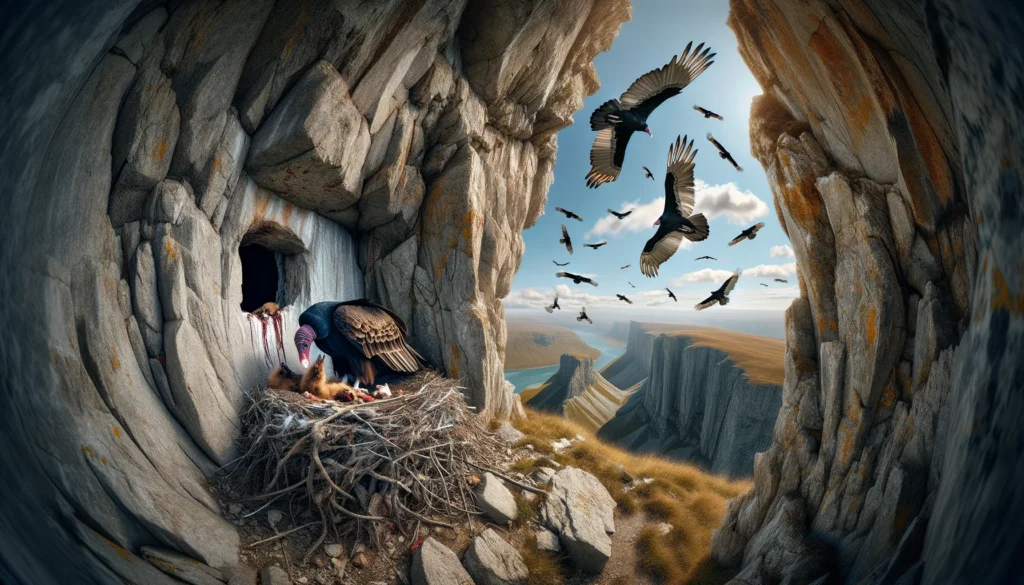
| Nesting Behavior | Challenges |
|---|---|
| Turkey Vultures nest in sheltered areas such as hollow logs, dense thickets, or deserted burrows. | Human impacts: habitat destruction and rapid development |
| Both parents take turns in caring for the chicks during the ten-week nesting period. | Threats to nesting habits jeopardize the survival of the species. |
Conclusion
Turkey Vultures are cool birds with some interesting habits that help nature stay balanced. They’re like nature’s cleaning team because they eat dead animals, which helps prevent the spread of diseases. Let’s learn why they’re so important and how they do their job.
First off, these birds have a special call that they use to talk to each other. They can find food, claim their space, and even find a partner with these sounds. Listening to their calls helps us understand how they live and work together.
We need to make sure Turkey Vultures stick around for a long time. Protecting where they live and teaching people about how awesome they are can help a lot. When we keep their homes safe from harm and spread the word about their good deeds for the environment, we’re helping them survive.
In short, Turkey Vultures are fascinating creatures with their unique calls and ways of living. By learning more about them and how they fit into nature, we grow to appreciate them more. They play a big role in keeping our planet clean, so it’s important to protect them and their homes.

